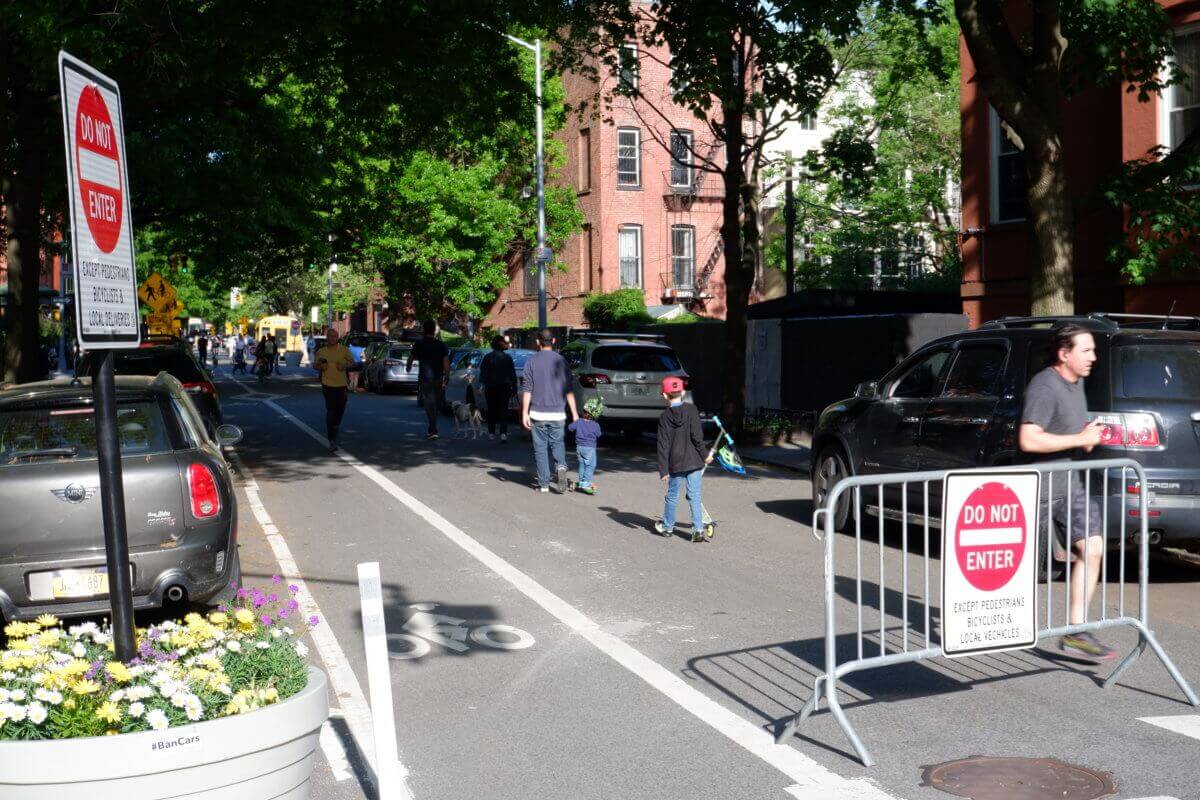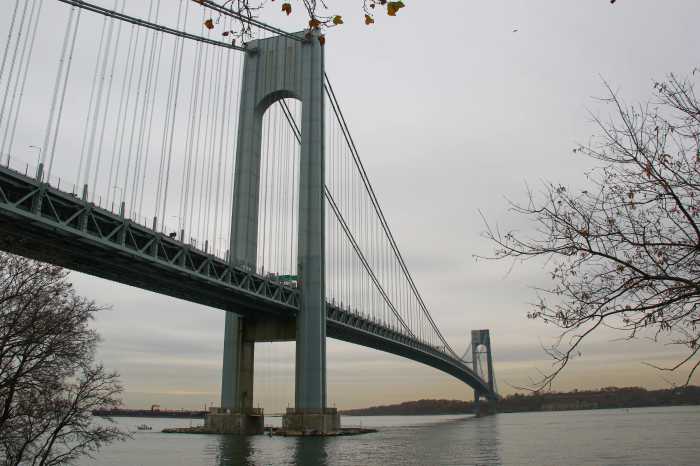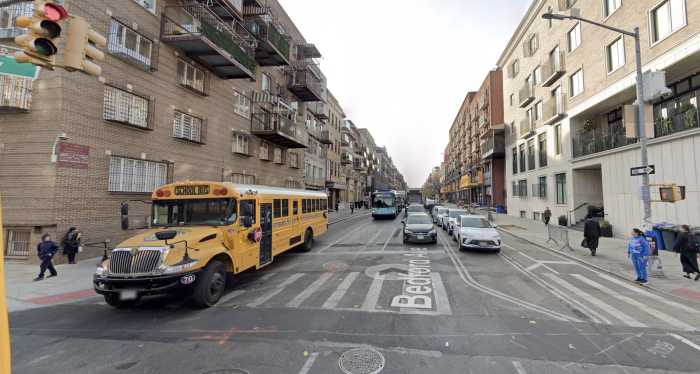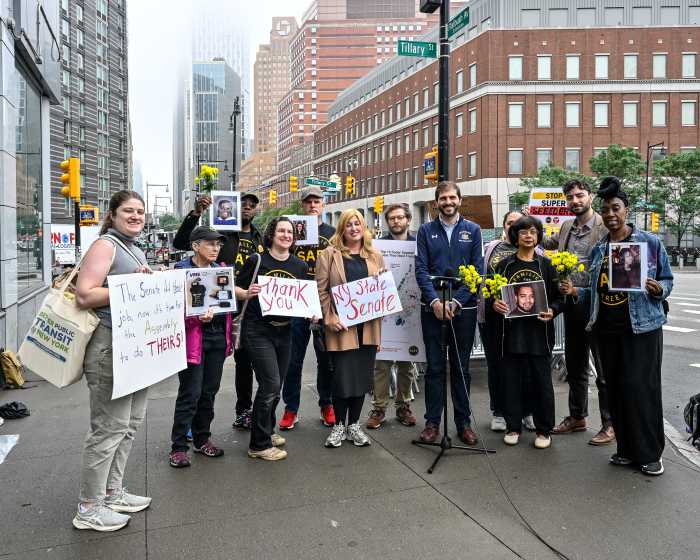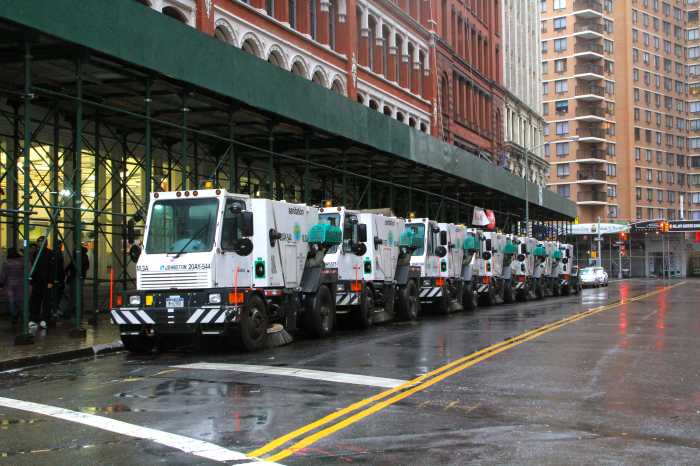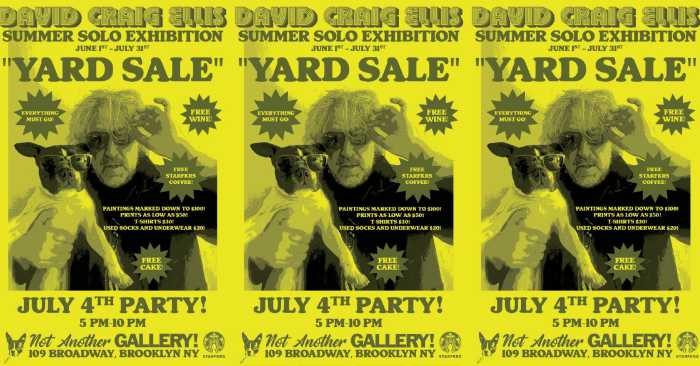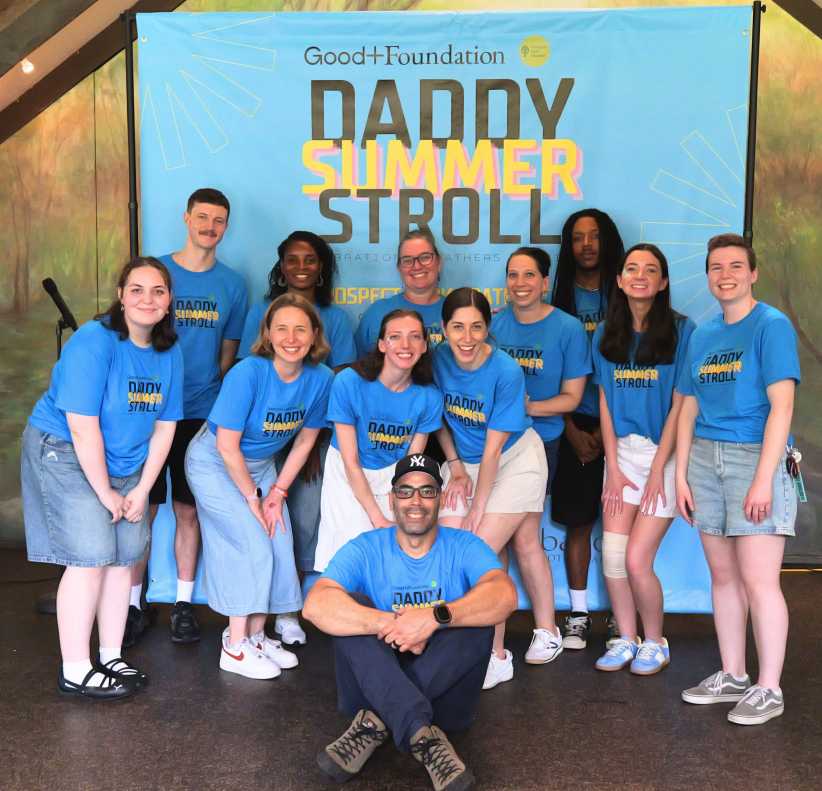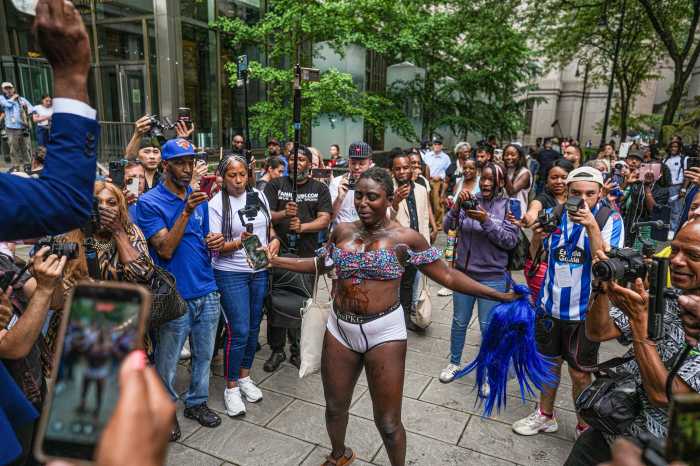After a city survey reported widespread support for the Willoughby Avenue open street, Brooklyn Community Board 2’s Transportation Committee voted on Tuesday to adopt a position in favor of the street — but only if the city’s transportation department makes some tweaks.
“I think, basically, we live in a community where there are a lot of diverging opinions about how to use the public space, so I would like to make a compromise proposal to recognize that,” said committee member Juliet Cullen-Cheung, who offered up the motion.
Cullen-Cheung proposed supporting the open street on the condition that DOT change its operating hours from 24/7 to 8 a.m.-8 p.m., and to shorten its length by a block, so it would end at Washington Avenue rather than Hall Street, “because that has been noted as the most onerous in the community.”
The motion passed 7-5, with one committee member not present for the vote. The Willoughby Avenue open street, which stretches between Fort Greene Park and Hall Street, has been operational since June 2020, when then-mayor Bill de Blasio announced the Open Streets program in response to the pandemic.
Community board support is not technically needed for DOT to continue the program, and it was not clear whether the department expected a vote to be taken at the Aug. 9 meeting.
The committee gathered in a rare special session in the midst of the community board’s two-month summer break to hear the results of a DOT survey on the open street since new “traffic calming” features were installed at the end of last year. DOT had initially been slated to share the results in May, but the presentation was canceled at the last minute. Department representatives told Brooklyn Paper’s sister publication amNY they were still “finalizing” the presentation at that time.

Though Willoughby Avenue has been closed to through-traffic on and off since 2020, DOT’s spring survey was launched specifically to gather feedback after the agency implemented new design treatments, including traffic-calming measures and curb extensions, at the end of last year.
Willoughby Avenue is a pedestrian and bicycle priority corridor, said Emily Weidenhof, director of DOT’s public space unit, linking Fort Greene Park to other parts of the neighborhood.
“We see a lot of strollers, cycling, and joggers in addition to people walking,” she said at the Aug. 9 meeting.
Weidenhof said DOT is “geared toward moving beyond the barricades” currently used to block off the open streets, noting that they are “a very imperfect tool for managing our streets.”
Locals looking to drive to their homes on the street have to drag the barriers out of the way to get in, and some anti-open streets activists say they slow emergency response vehicles, though DOT representatives said they are in regular contact with the police and fire departments, who have not had issues on Willoughby Avenue.
Around 2,000 people took the survey either online or in-person, said Kyle Gorman, a program manager in DOT’s public space unit, and most respondents live in the area — while others spend significant time in the neighborhood shopping, dining, visiting friends and family, or working.
Of those 2,000 respondents, 44% said their primary mode of transportation on Willoughby is walking, 28% mostly ride their bicycles, and 16% drive their personal vehicles. The rest use for-hire vehicles or ridesharing services, are dropped off by someone else, or utilize Access-A-Ride, according to the survey results.
“We also asked folks, do they feel safer walking or biking on the Willoughby Ave. open street since we were able to implement these traffic calming measures in December,” Gorman said. “Nearly three-quarters of the folks who took this survey … said that ‘Yes, they did feel safer since the traffic-calming measures were implemented.”
Some community members with connections to PS 20, the nearby elementary school, said they appreciated that the street gives students a safer route to and from school, Gorman added.
“At the same time, though, there were some areas for improvement and other types of comments that we did receive about looking to maybe reduce the number of signs and improving some communication strategies overall,” he said.
The mostly-positive results didn’t convince everyone on the board.
“Has there ever been a survey throughout the whole city that didn’t come back in the positive?” asked committee co-chair Esther Blount. “Because I can’t imagine it coming back any other way since every question is written in the positive.”
Gorman said that several of the survey questions were open-ended, and asked for commentary in addition to simple “yes or no” or “agree or disagree”-style questions. Those comments were largely reflective of the opinions expressed by the survey results in general, he said.
“I’m not going to sit here and pretend like everything, 100% was sunshine and rainbows and there weren’t areas or issues that people flagged or areas for improvement,” Gorman said. “But the comments were definitely in line with what the bar graphs and pie charts showed.”
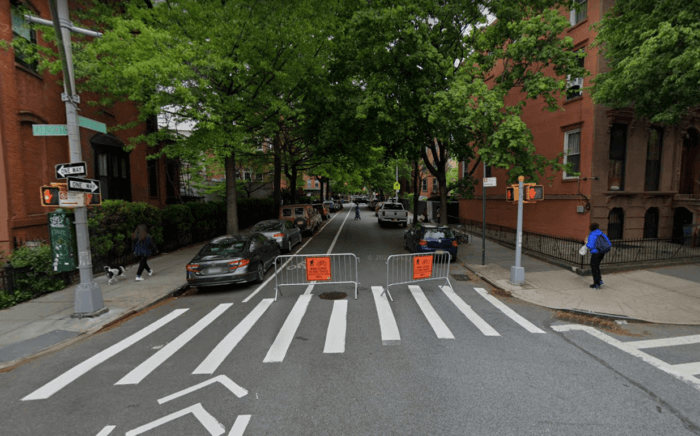
In March, some locals contested the results of a similar survey conducted by DOT local councilmember Crystal Hudson’s office, claiming they had not had the opportunity to submit their opinions and people from outside the neighborhood had unfairly affected the results.
Committeemember Ernest Augustus voted against the motion to support the open street, claiming the city had “violated the city charter” and “circumvented the community board” in developing the permanent Open Streets program.
“That’s not a compromise,” Augustus said. “A compromise would have been, realistically, if the city had undertaken the proper land use review, filed the appropriate land use review, submitted it to the board … what we got was extortion.”
Another member, Nicole Murray, called the motion “a fine compromise,” noting that the program was proposed by the mayor — not out-of-town “biker bros,” as some committee and community members had said. She likes the open street as-is, she said, but understands why it’s frustrating to local drivers.
“If the board still is going to say here, ‘No, no, no, all or nothing, I don’t know what to say,” Murray said. “It’s a popular program, it’s the mayor’s program, a lot of people like it. What are we doing here? I just don’t know what we’re doing.”
Representatives at the DOT did not immediately respond to request for comment on whether or not they would take the motion into consideration.


